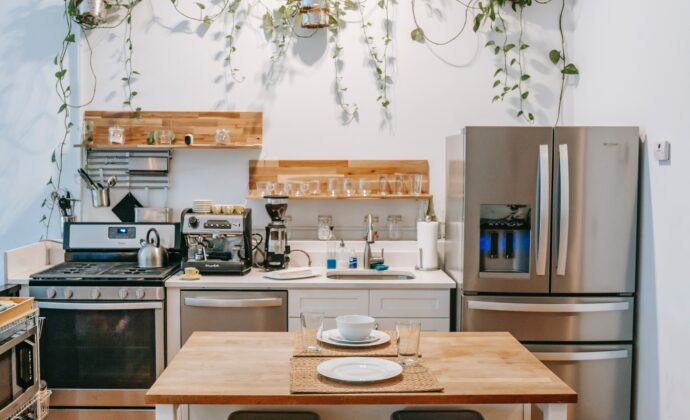
Smart Kitchens
Being able to safely get yourself a drink, snack, or even cook a full meal can allow for a new level of independence for many people. “Smart” kitchen appliances can be one way to help people achieve greater levels of independence in their own homes.
Some examples of Smart Kitchen Devices are:
– Smart plugs allow you to turn on or off all devices that are plugged into it using an app on a phone or tablet. Toasters, blenders, food processors, and coffee makers are all examples of appliances that can be controlled by smart plugs.
– Alexa/Google enabled appliances can allow you to use your voice or an app to work the appliance. You can even set controls for specific tasks. For example, if you have an Alexa enabled microwave, you can set it up to heat water for a specific amount of time just by saying “Alexa, make my tea.”
– Smart ovens can allow you to control your oven from an app on your phone or tablet. You can turn the oven on or off, change the heat setting and get information on how to cook and maintain the oven.
– A smart fridge keeps track of the foods that you put in the fridge. It will give you important information such as optimal storage, expiration, and usage.
– Smart safety devices can detect dangerous situations in the kitchen and prevent them from happening. One example is stove shut offs that come in a range of options. Some are simply a timer that will shut the stove off after a set period of time, others automatically turn off the stove if smoke is detected, some just provide a reminder the stove is still on through an app, and high end versions detect motion and can turn off the stove if motion isn’t detected for more than 5 minutes.
– Talking thermometer/kitchen scales – Talking thermometer and kitchen scales are operated the same way as non-talking thermometers and kitchen scales. The advantage of using talking thermometers and kitchen scales is that it will read aloud the temperature or measurement.
Low-tech kitchen gadgets
Independence can also be gained through use of everyday items in the kitchen. “Low-tech” devices provide ways to navigate simpler kitchen tasks. These devices provide adapted ways to work in the kitchen but typically don’t require apps or high tech electronics.
Some examples of Low-tech kitchen devices are:
– A pot minder that rattles can be used to provide an auditory cue that water is boiling, and it is time to turn it down in food preparation.
– Adapted knives and food choppers aid in preparing foods for people who may need help with fine motor skill tasks. They can help with tasks such as chopping, mincing, and dicing of foods.
– A pot holder can be used to hold the pot or pan in place while cooking without a person having to hold onto the pot or pan. This is helpful when doing tasks such as stirring or flipping that may move the pot or pan while cooking.
– A pot stirrer is a hands-free tool that can stir your dish for you while cooking by placing it in you pot. There are typically different speeds in stirring that are available in the device.
– Ring pull can opener (for soda cans/pop tops) is used by attaching the hook through the tab of the soda can/pop top and pulling it open with the device.
– A magic tap automatic drink dispenser is used similar to the hand soap bottles. A tap is inserted in the drink container. Pushing down on the tap will push the drink into your cup without having to pour it.


